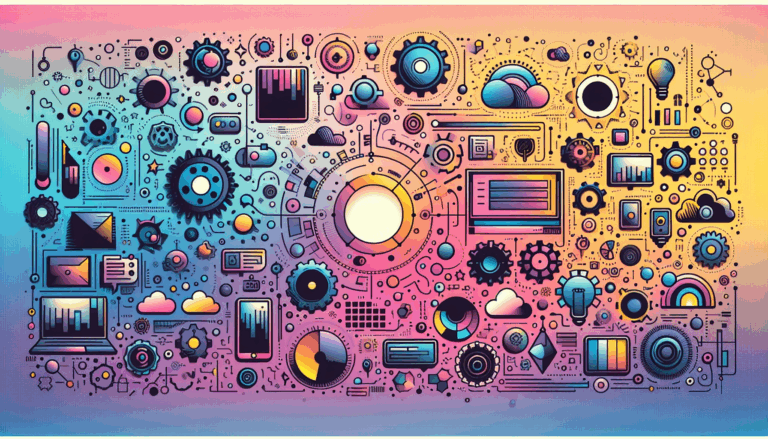Neuro-Ergonomic Design Principles for WordPress Admin Panels
Enhancing User Experience: Applying Neuro-Ergonomic Design Principles to WordPress Admin Panels
When it comes to designing user interfaces, especially for complex systems like WordPress admin panels, incorporating neuro-ergonomic design principles can significantly enhance the user experience. This approach combines insights from neuroscience, cognitive psychology, and ergonomics to create interfaces that are intuitive, efficient, and enjoyable to use.
The Importance of Ergonomics in UI Design
Ergonomics, as defined, focuses on creating stress-free workplaces by considering body mechanics and physical stress. When applied to virtual products like user interfaces, ergonomic principles prioritize comfort, usability, and functionality.
For WordPress admin panels, this means designing an interface that minimizes stress and maximizes usability. Here are some key ergonomic principles to consider:
Comfort
- A comfortable UI avoids overwhelming users with too many features and unnecessary design elements. For WordPress admin panels, this translates to a minimalist design that keeps the layout simplistic and purposeful. The goal is to ensure that each component helps the user achieve a specific task without causing confusion or delays.
Usability
- Usability is about how easy it is to use the interface. This involves a well-organized layout, intuitive navigation, and minimal steps to achieve a desired result. For example, using universal color associations (like red for risks, yellow for warnings, and green for positives) can guide the user’s attention effectively.
Neurodesign: A Deeper Dive into User Experience
Neurodesign, a field that combines neuroscience and cognitive psychology, offers valuable insights into how users process information and make decisions. Here are some neurodesign principles that can be applied to WordPress admin panels:
Processing Fluency
- People prefer images and designs that are easy to process. Using familiar, well-organized, and cognitively lightweight designs can enhance the user experience. For instance, placing the search bar in a consistent location, such as the top corner of the page, makes it easy for users to find, even on their first visit.
First Impressions
- The initial impression of a UI is crucial. Designing the WordPress admin panel to make a positive first impression can be achieved by ensuring that the most important elements are immediately visible and accessible. This can include a clean dashboard with relevant information prominently displayed.
Visual Salience
- Visual salience refers to the ability of certain elements to stand out. Using appropriate font sizes, colors, and layouts can draw the user’s attention to the most important parts of the interface. For example, using bold fonts for headings and highlighting key actions can guide the user through the interface more efficiently.
Reducing Cognitive Load
- Neurodesign helps in identifying factors that contribute to mental fatigue. Simplifying in-app tasks and presenting information clearly can reduce cognitive load. In the context of WordPress, this could mean streamlining the menu options and reducing the number of steps required to perform common tasks.
Real-World Examples and Case Studies
Several real-world examples illustrate the benefits of applying neuro-ergonomic design principles to WordPress admin panels:
Simplified Dashboard Design
- A concept design for the WordPress admin dashboard emphasizes simplicity and usefulness. By removing unnecessary widgets and menus, the dashboard can be decluttered, making it easier for non-technical users to navigate. This approach involves creating different admin panels (Basic, Standard, and Advanced) to cater to various user needs and preferences.
Personalized User Experiences
- Personalization is a key aspect of neurodesign. By understanding individual differences and unique preferences, designers can create personalized digital user experiences. For WordPress, this could involve customizable dashboard layouts and menu options that adapt to the user’s behavior and needs.
Tools and Technologies for Enhanced Design
Several tools and technologies can aid in the design and optimization of WordPress admin panels:
Figma for Prototyping
- Using Figma’s prototyping features allows designers to test user interactions and flow before moving the design into WordPress. This step can help identify usability issues and ensure that the design elements enhance the user experience. For example, testing neomorphic design elements in Figma can help in creating interactive and visually appealing interfaces.
WordPress Plugins for Optimization
- Plugins like WP AdminTools and User Admin Simplifier can help in simplifying the WordPress admin interface. These plugins allow for the removal of unnecessary menus and the restriction of access, making the interface more user-friendly.
Content Delivery Networks (CDNs)
- Using CDNs can help in reducing the load time of the website by serving static assets from servers closer to the user. This is particularly important for designs that rely on resource-intensive elements like subtle shadows and gradients.
Tips and Tricks for Smooth Conversion
To ensure a smooth and efficient conversion of Figma designs to WordPress, here are some additional tips:
Organize Figma Layers
- Keeping Figma layers neat and labeled makes it easier for developers to identify and implement design elements, including those with neomorphic effects. This organization helps in maintaining the integrity of the design during the conversion process.
Client Collaboration
- Involving clients at key milestones ensures that the final product meets their expectations. This collaborative approach can lead to better outcomes and higher client satisfaction, especially when incorporating complex design trends like neomorphism.
Use Neurodesign Technologies
- Technologies like EEG, fMRI, and eye-tracking can provide valuable insights into how users interact with the interface. These tools can help in testing different design elements and patterns to see which ones are most effective at capturing and holding user attention.
Conclusion and Next Steps
Incorporating neuro-ergonomic design principles into WordPress admin panels can significantly enhance the user experience. By focusing on comfort, usability, and functionality, and leveraging neurodesign insights, designers can create interfaces that are intuitive, efficient, and enjoyable to use.
If you are looking to optimize your WordPress admin panel or convert your Figma designs into a live WordPress site, consider reaching out to Figma2WP Service. Our team specializes in converting Figma prototypes into fully functional WordPress sites, ensuring that all design elements are preserved and optimized for performance.
Remember, a well-optimized website with a user-friendly admin panel is key to better search engine rankings, improved user engagement, and a positive overall user experience. Start optimizing your WordPress admin panel today and see the difference it can make.
For more information on how to simplify and enhance your WordPress admin interface, you can also explore resources from PressCoders and Dodonut. These resources provide valuable insights and practical tips for improving the usability and ergonomics of your WordPress admin panel.
More From Our Blog
Crafting Exceptional Real Estate Experiences with Design and WordPress Building a professional and highly functional real estate website today requires combining creative Figma property design with the powerful capabilities of WordPress. Whether you’re a real estate agent, agency, or property developer, transforming your custom designs into dynamic listing sites can elevate your business’s digital presence Read more…
Transforming Designs into Functional Booking Experiences In today’s fast-paced digital world, having an efficient booking system integrated into your website can dramatically enhance customer engagement and streamline operations. Especially for businesses converting designs from tools like Figma into fully functional WordPress websites, embedding robust reservation systems becomes a crucial step. If you’re wondering how to Read more…


